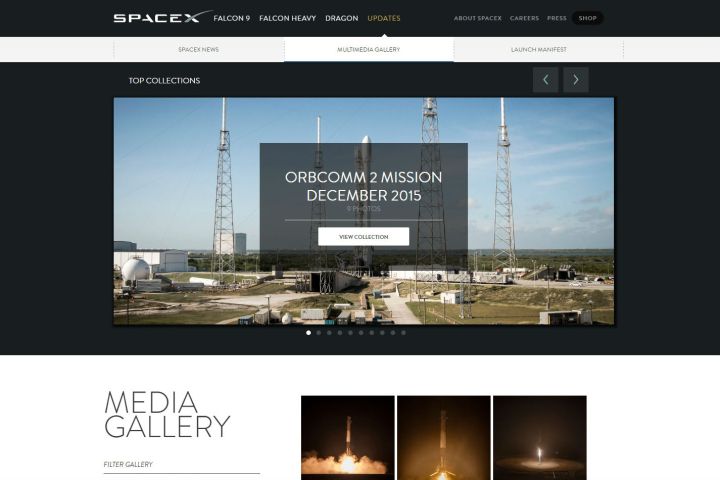
SpaceX’s Falcon 9 rocket is set to launch into the Florida atmosphere after 1:21 AM EST Friday morning, carrying with it a commercial communications satellite dubbed JCSAT-14. The company has a two-hour window within which they can lift off from Cape Canaveral Air Force Station’s Launch Complex 40. A successful liftoff will mark the 24th time SpaceX has sent a Falcon 9 from the launchpad, and while the launch is expected to go smoothly, the landing isn’t.
SpaceX is no stranger to failed landings. Several of the company’s landing attempts since early 2015 have resulted in explosions. But on April 8, 2016 SpaceX made history by safely landing a Flacon 9 full thrust rocket on an autonomous spaceport drone ship (ASDS) that was stationed out at sea. ASDSs are employed when rockets reach a velocity that’s too high for safe return to land and recovery. By positioning ASDSs hundreds of miles away, rockets can attain greater velocities and altitudes before separating from their payload and returning to Earth. Last month’s mission saw Falcon 9 make a smooth return and controlled vertical landing.

But Elon Musk and his team don’t expect Friday’s Falcon 9 to return home safely. Though SpaceX is confident it can accomplish its primary goal of launching the JCSAT-14 satellite into orbit, the company isn’t so sure that the rocket will make a safe landing. About two and a half minutes after liftoff, the Falcon 9 will decouple from the JCSAT-14 satellite and prepare for a return to Earth to attempt “an experimental landing” on the ASDS named “Of Course I Still Love You.” The landing is experimental because, well, it will probably fail. The Falcon 9’s required velocity and altitude will subject the rocket to extreme fuel expenditure and re-entry heating, both of which decrease the chances of a successful landing. At such high velocity the rocket may not be able to slow itself down to a soft landing speed.
The launch and landing will be webcast on YouTube with mission commentary or just technical video and audio from about 20 minutes after liftoff.
Editors' Recommendations
- Watch SpaceX fire Starship’s Raptor engines ahead of 4th test flight
- Elon Musk throws some light on his very busy schedule
- FAA review of SpaceX Starship launch delayed by another month
- Watch SpaceX’s Crew-4 astronauts arrive at new home in space
- SpaceX Crew-4 astronauts are on their way to the space station


